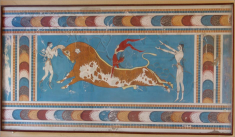Speaker
Description
AEgIS (Antimatter Experiment: Gravity, Interferometry, Spectroscopy) is an experiment at the Antiproton Decelerator (AD) facility at CERN that aims at investigating the asymmetry between matter and antimatter and, especially, the antihydrogen behaviour under Earth’s gravitational pull. In 2018, the first antihydrogen atoms were formed by charge exchange between Rydberg positronium and trapped antiprotons, which resulted in a substantial gain of knowledge of the involved processes. The experiment has received multiple upgrades in the last two years, during CERN Long Shutdown 2, to substantially improve the antihydrogen formation rate, and to accommodate the fact that, in the meantime, a new decelerator, the Extra Low ENergy Antiproton (ELENA), has been incorporated to AD. The upgrades included a new laser clean-room hosting two new lasers, improved efficiency and stability of the positron accumulation line, a new scheme of the antihydrogen formation trap electrodes, new degraders for the incoming antiprotons, detectors with higher sensitivity, and an entirely new control system has been conceived and deployed. All these efforts have been put in place in order to generate the first pulsed beam of neutral antihydrogen, which will enable high precision inertial studies of antimatter. In this presentation, I will describe the upgrades, the validation of the new working modality with the ELENA incoming beams, and I will provide an outlook on further developments.
Details
Marco Volponi, Università degli Studi di Trento, Italy and CERN
https://www.unitn.it/
https://home.cern/
| Is this abstract from experiment? | Yes |
|---|---|
| Name of experiment and experimental site | AEgIS, Antimatter Factory, CERN |
| Is the speaker for that presentation defined? | Yes |
| Internet talk | No |
